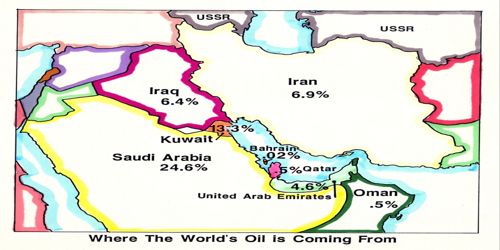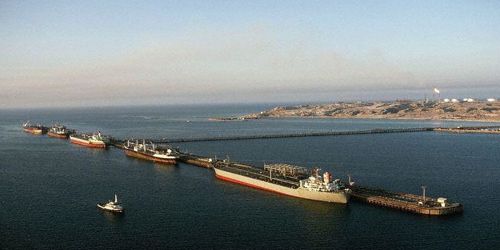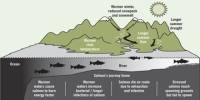Persian Gulf Oil
The gulf has many fishing grounds, extensive reefs (mostly rocky, but also coral), and abundant pearl oysters, but its ecology has been damaged by industrialization and oil spills.
- The majority of the Persian Gulf Oil Fields are located in the Persian Gulf Basin
- Located between Eurasia and Arabian Plates
- The top 5 future oil fields in the world all reside in the Middle East
Geologic History
The Persian Gulf is the remains of a once larger basin now in filled by sediment from Mesopotamian Rivers. Collision of Arabian and Eurasian plates at the Mesozoic/Cenozoic boundary produced the Zagros Fold Belt and the large Mesopotamian Foredeep. Has been an area of consistent deposition during the Paleozoic that led to the accumulation of a very thick sedimentary lens of carbonate rocks and evaporates.
The Shatt al-Arab river delta forms the northwest shoreline. The Persian Gulf was a battlefield of the 1980–1988 Iran–Iraq War, in which each side attacked the other’s oil tankers. … The body of water is historically and internationally known as the “Persian Gulf”.

Formation of Oil (Creation)
- Sediment from land and organics typically from marine environments fall to the bottom of the basin where they create layers which are subject increase pressure and depth as more layers are laid down
- Organics then slowly break down and form the an organic rich residue (kerogen)
- As more heat and pressure is applied the kerogen can change into oil and gas (“oil window”).
Formation (Migration)
- The oil originates in source rock (shales) and will eventually migrate up into the reservoir rock (sandstone and limestones)
- Folds and faults create traps (zones in which the oil becomes trapped)
Reserves
Reserves represent quantities of crude oil estimated to be commercially recoverable with current technology. In 2006, the Persian Gulf countries (Bahrain, Iran, Iraq, Kuwait, Qatar, Saudi Arabia, and the United Arab Emirates) produced about 28 percent of the world’s oil, while holding 55 percent (728 billion barrels) of the world’s crude oil reserves.

Global Consumptions
Although continents such as N. America and Europe use the most oil currently, countries such as China and India are rapidly growing thus increasing their need for oil.
OPEC
- The Organization of Petroleum Exporting Countries has 12 current member countries
- Created to control the supply and distribution of oil on the global market
- Their presence has large effects on society as they control the majority of the known petroleum in the world
Environmental Issue:
- The burning of fossil fuels (petroleum) creates large amounts of greenhouse gases (SO2, CO2, etc)
- Water pollution through by-products of refining and oil spills
- Oil spills have can very adverse affects the animals and plant life of the surrounding spill
During The Persian Gulf War when Iraq fled Kuwait it set fire to 721 oil wells, burning millions of barrels of oil much of which also poured into the Persian Gulf.
The Persian Gulf is a 600 – mile body of water. Persian Gulf is the most strategic waterways in the world due to its importance in the global oil transportation. Due to the war and high rate of water evaporation, extended drilling and oil extraction, pollution of the water has increased alarmingly. The Persian Gulf is now one of the sensitive marine ecosystems.
The Major sources of pollution are:
1) Pollution from ships
2) Pollution from Land-based sources
3) Pollution caused by dumping from ships and aircraft
4) Pollution resulting from exploration and exploitation of the bed of the territorial sea, the continental shelf and the sub-soil thereof.
5) Pollution from other human activities
Alternative to Persian Gulf Oil
- Although there are large reserves of oil in and around the Persian Gulf, new sources of energy are eventually going to be required to replace these oil fields
- Renewable energy resources (solar, wind, geothermal, nuclear, etc)
- Coal and natural gas
- Use of tars sands, oil shales and other sources of hydrocarbons will become more prevalent if the cost of oil rises.
Information Source:
















